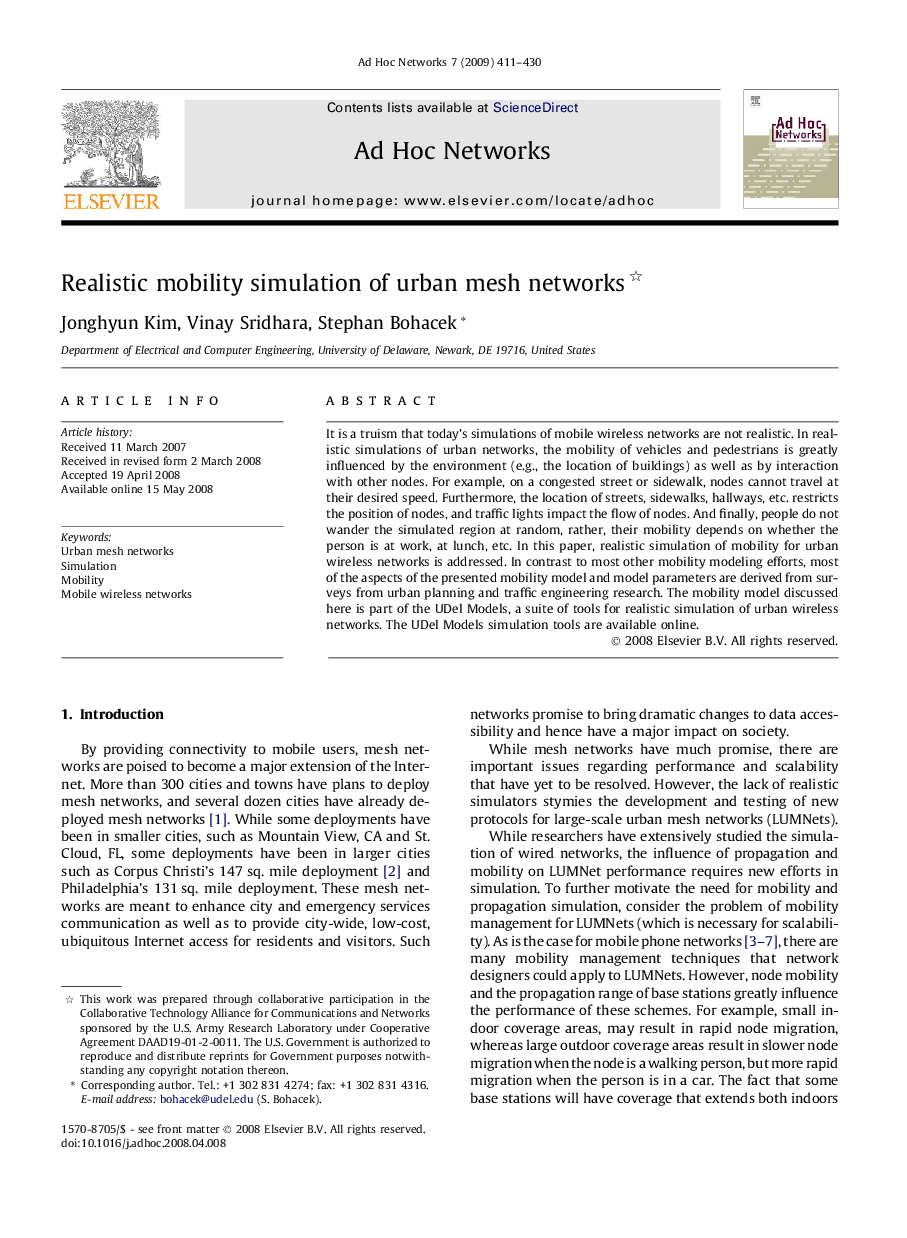| Article ID | Journal | Published Year | Pages | File Type |
|---|---|---|---|---|
| 446456 | Ad Hoc Networks | 2009 | 20 Pages |
It is a truism that today’s simulations of mobile wireless networks are not realistic. In realistic simulations of urban networks, the mobility of vehicles and pedestrians is greatly influenced by the environment (e.g., the location of buildings) as well as by interaction with other nodes. For example, on a congested street or sidewalk, nodes cannot travel at their desired speed. Furthermore, the location of streets, sidewalks, hallways, etc. restricts the position of nodes, and traffic lights impact the flow of nodes. And finally, people do not wander the simulated region at random, rather, their mobility depends on whether the person is at work, at lunch, etc. In this paper, realistic simulation of mobility for urban wireless networks is addressed. In contrast to most other mobility modeling efforts, most of the aspects of the presented mobility model and model parameters are derived from surveys from urban planning and traffic engineering research. The mobility model discussed here is part of the UDel Models, a suite of tools for realistic simulation of urban wireless networks. The UDel Models simulation tools are available online.
